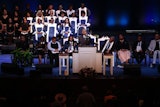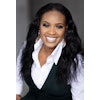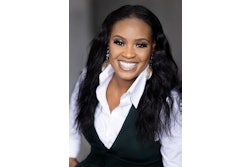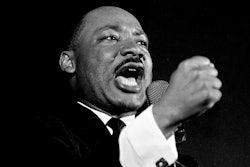I went to a great public school, had a top notch teacher and lived in a great community. I paid attention and my teachers encouraged me to think critically. If best-case scenarios could be created in a test tube, they would look much like my real one did.
I loved social studies.
We learned all the dates and names. We even learned about things like context and perspective. I left high school knowing who Nat Turner, W.E.B. Du Bois and Langston Hughes were. I recall experiencing a version of the famed blue-eyed-brown-eyed segregation exercise in elementary school. Though I think we were divided by shoe color or some other arbitrary thing. We memorized Dr. Martin Luther King’s famous speech. I think this is where we all missed the point. By “we” I mean all the White people.
The one thing my class was missing was Black people. In fact, my whole school, city and state lacked them. This happenstance of geography and time is not unique in this respect but common in America. What I’m not sure was common was how we thought we cared about things like equality. We were taught it in school and church. We, again that would be all of us, were Mormon.
I was taught in my home and my class reinforced the ideal that one should be judged by content of character and that skin color was irrelevant. There is a scripture in the Book of Mormon that reads, “And he [God] denieth none that come unto him, black and white, bond and free, male and female … all are alike unto God.” We were taught that in church and on the streets as well. Racial slurs were tolerated by no one, empathy with the oppressed was emphasized and no punches were pulled in illustrating the wrongs African-Americans endured. I was gifted both a sense of shame in what my White race had done and a sense of pride that we had repented and shed our prejudice.
Then I left my home in suburban Salt Lake City to be a Mormon missionary in urban Atlanta in the mid 1990s. There I met Black people.
They were not as friendly as I had hoped. In fact, it seemed to me that I was distrusted and disliked. None of these people knew me nor did they know anything of my faith. They could not tell I was one of the “good ones.” I tried to show what I was, but others were slow to be swayed. In fact, it seemed as if they judged me by the color of my skin with no regard for the content of my character.
Things got worse.
I also learned a new word: “cracker.” I did not initially know the history or meaning of this word but I could I tell by the tone that it was not nice and it was directed at me. People used this word with no consequence. Adults did not scold children and peers were not ashamed. Did these people not attend social studies class? It was as if this entire segment of society had forgotten the whole point of the movement. Had King died in vain? I was more than disappointed. Despite this, I stuck around and endured the abuse. I even asked questions. What began as a disappointment in Black people and apparent attitudes, shifted to a realization that I was misled about the ’60s all along.
The civil rights movement was not about loving one another and everyone getting along. It was about ending abuse and oppression. There is something lost in reprinted photos of signs and fire hoses to those of us who never endured them. There is a disconnect between the beautiful rhetoric and the reality of the time.
The signs read “Am I Not A Man?” or “Equal Rights” and the speeches called for fairness and character, but after talking to those who held the signs I realize that what they wanted to say was “stop beating, raping, arresting, and killing my people you sorry bunch of #$@%!” In the context of beatings, rapes, arrests and killings, calling someone a #$@ is appropriate and understandable, yet ineffective as one being called such a thing is immediately less likely to comply.
This whole aspect of the civil rights era was left out of the books I read. Whites were focused on theory and morals and ignored real life consequences of those things being historically ignored.
Upon reflection, the blue eyed-brown-eyed experiment got it wrong as well.
Perhaps that object lesson would be more accurate, and would have led to me being equipped with a better understanding, if the whole class had been assigned to color a rainbow. We could give a box of crayons to each blue-eyed kid and not allow the brown eyes to have any; yet grade them all the same. Then the 60s would come along, we would talk about how it isn’t fair to restrict crayons from brown-eyed kids and allow each one to have a single stick of wax, green perhaps. Afterward, we could again grade them all the same and pat them on the head as they argue about how a rainbow can’t be colored all in green, and how it is inherently unfair to take crayons from one to give to another. I could then muse to another teacher that I don’t understand why the argument continues, that was a whole hour ago.
Because that is where we are now.
It was just a half a generation ago that we scrubbed “Whites Only” off the bathroom door, yet we act as if it is history. We passed the civil rights bill, which ended the restriction of crayons, we started affirmative action, the green crayon, and now we read about it in books as if the story has ended.
Mormonism taught me where we messed this up. I got it wrong when I assumed we had repented of our collective oppression of Black people. We never did. My religion teaches that repentance requires: first the acknowledgment of wrong doing, stopping that wrong doing, restitution where possible and then asking forgiveness.
We only completed half of step one and then stopped halfway through step two.
I wish my teachers told us this. I wish they had explained that keeping Black kids out of good schools meant keeping them from getting good paychecks. I wish they had helped me to understand that integration happened at the tip of a bayonet. I wish we were helped to realize how many of us never repented but were forced to stop oppressing. Then maybe we would be prepared and able to understand and continue the lesson.
Dalyn Montgomery is an artist and writer who specializes in creating messages that communicate across racial lines.


















